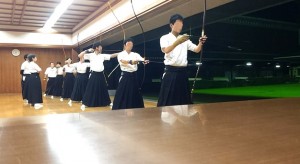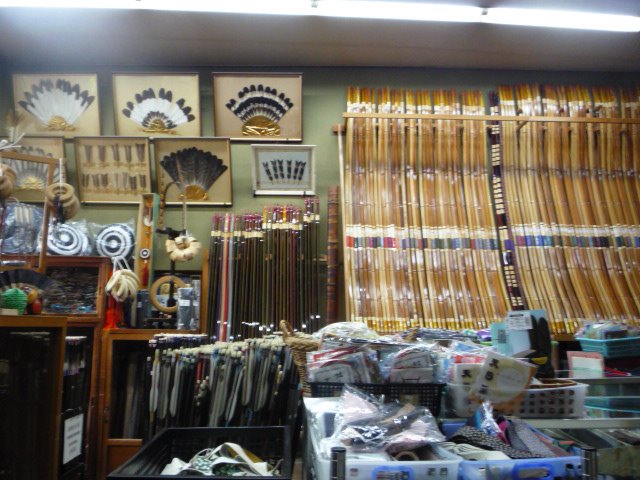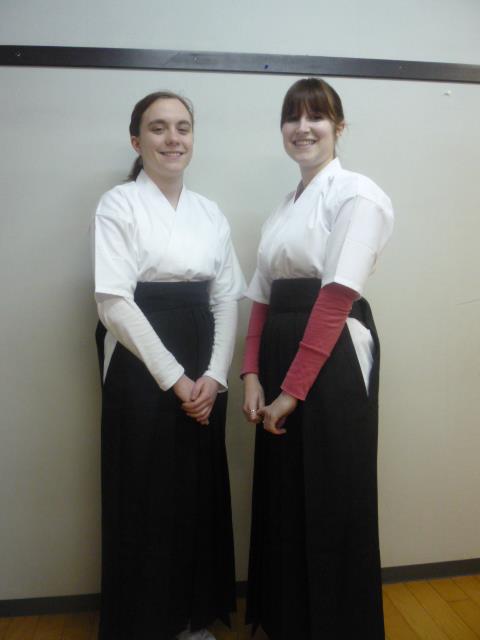Although I intended to participate in more than one club activity, it turned out that my schedule only matched with my Kyudo lessons. But I’m very glad that I picked Kyudo as my CIP, because it’s been a very rewarding activity so far. When I first started, I was nervous. From my observations, Kyudo looked more like an art than anything else. Kawaguchi-sensei was very patient in explaining to us the eight basic steps to Kyudo. Before I was allowed to hold a bow, I had to know the names and actions associated with these steps. I spent the first two weeks practicing the kata, the form used in Kyudo. Once I had memorized these to sensei’s satisfaction, I was allowed to practice with a bow. The bows used in Kyudo are enormous. Really, they’re often taller than the archer using them. And it’s really tough to draw them back, too. Finally, during our third week of lessons, we were allowed to fire the bow for the first time. I’ll never forget that moment – sensei helped me draw the bow fully, and told me to take a shot. My heart was racing when I let go of the string. I think I was shaking afterwards too.
Since then, we’ve been practicing on the straw makiwara targets every time we come to the dojo. Little by little, I feel myself improving. At first, I was using a really weak bow – only 8kg. But I’ve worked myself up to an 11kg, and soon I’ll be able to handle something a little stronger. I’m getting better at controlling my aim, steadying my hands, and keeping correct posture while shooting. Best of all, I recently learned the trick to making the arrow fly in a straight line – a big deal, since the recoil of the bow had been altering the trajectory of my shots.
During my second month of lessons, I decided to buy my own uniform, including the glove. Making this investment means that Kyudo is more than just something I’m trying; it’s something I plan on doing forever, if possible. Not just because it’s expensive, but because it almost felt like an initiation. Going to a specialty Kyudo store over in Shiga-ken to get fitted for a glove and uniform, and pick out my own arrow meant that in a way, I’ve become a part of the dojo. I have, too. I often make small talk with the other practioners, usually somewhat older than me. Some of them greet me when I come in, and it’s nice to feel that I’m seen as less of an outsider.
Meeting other people through Kyudo is definitely harder than in other CIP activities, I think. People go there to practice, not really to socialize. That isn’t to say it’s impossible to make friends there; when I have the chance, I talk with other in the break room, or exchange a few words while practicing. There was one situation in which I introduced myself to a Japanese college student. Of course, the initial response is always very formal and not necessarily open to continuing conversation. What I’ve learned is that, by being in the dojo as often as possible and making constant effort to communicate with others, little by little they’ll open up to you.
The end of this semester ends on a high note in Kyudo as well. Before the year ends, I will likely get my first chance to shoot at a real target, much smaller and farther than the practice makiwara. I don’t know how I’ll feel when I do it – I could be relaxed, due to all the practice I’ve put in, but I might get as nervous as I was the first time I shot a bow. Only time will tell.



